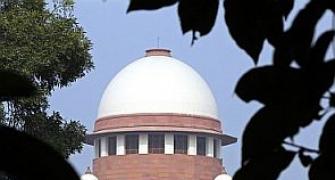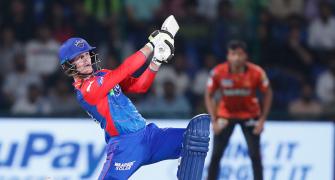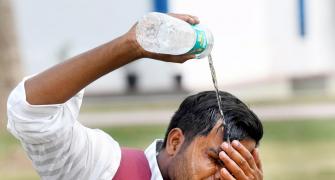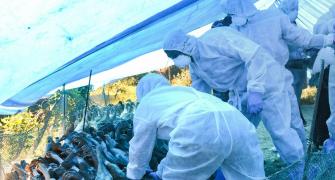ISRO launched 12 Indian, 22 foreign satellites and successfully flight tested India's first winged-body aerospace vehicle, reports T E Narasimhan.
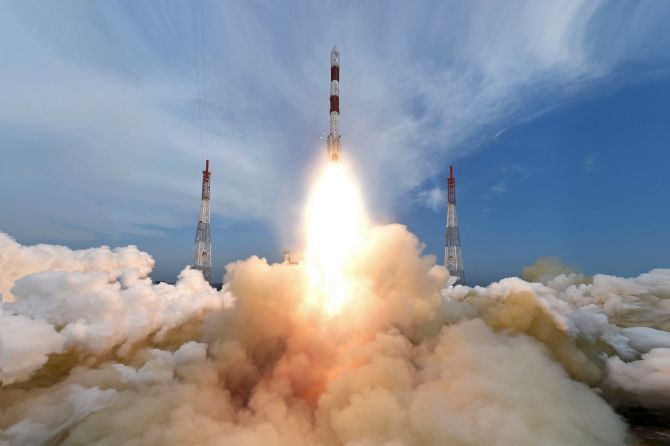
The past year has been a highly successful and an eventful one for the Indian Space Research Organisation, which achieved significant milestones in the domains of launch vehicle, satellite, applications and space exploration.
ISRO launched seven vehicle missions in 2016. All were successful.
Eight ISRO satellites, four student satellites and 22 foreign satellites were launched by these missions.
Year 2016 also saw two successful advanced launch vehicle technology initiatives by ISRO -- the Reusable Launch Vehicle-Technology Demonstrator and Scramjet technology demonstrator -- having their maiden test flights.
Additionally, India's Mars Orbiter Spacecraft completed two years in its orbit around Mars and India's ASTROSAT multi-wavelength observatory successfully completed one year in orbit.
The year started off with the PSLV-C31 carrying IRNSS-1E, the fifth satellite of the Indian Regional Navigational Satellite System constellation, on January 20.
It was followed by PSLV-C32/IRNSS-1F Mission. In this flight, which was its 34th, the Polar Satellite Launch Vehicle launched IRNSS-1F, the sixth satellite of the IRNSS constellation, on March 10.
The PSLV launched the seventh and the last satellite IRNSS-1G of IRNSS constellation on April 28.
With this, the space segment of the IRNSS is fully deployed.
The IRNSS signals are now available and trials with the receiver system are in progress.
Prime Minister Narendra Modi dedicated IRNSS to the nation as 'NavIC' (Navigation Indian Constellation).
This is an independent regional navigation satellite system designed to provide position information in the Indian region and 1,500 km around the Indian mainland.
IRNSS provides two types of services, namely, standard positioning services (provided to all users) and restricted services (provided to only authorised users).
India's first winged-body aerospace vehicle, RLV-TD, was successfully flight tested on May 23.
In this flight, critical technologies such as autonomous navigation, guidance and control, reusable thermal protection system, and re-entry mission management were successfully validated.
On June 22, PSLV-C34 successfully launched 20 satellites in a single mission. It included India's CARTOSAT-2 series of satellite (weighing 727 kg) as primary payload and two academic institutes' satellites, namely, SWAYAM and SATHYABAMASAT and 17 satellites (total weighing 555 kg) of foreign customers from Canada, Germany, Indonesia and the US as co-passengers.
On September 8, GSLV-F05, India's Geosynchronous Satellite Launch Vehicle, equipped with the indigenous Cryogenic Upper Stage, successfully launched the country's weather satellite INSAT-3DR.
INSAT-3DR is a follow-on meteorological satellite to INSAT-3D.
This launch is significant, considering the fact that this is the third consecutive success of the indigenous CUS, which signified the country's successful assimilation of the complex cryogenic rocket propulsion.
ISRO also successfully flight-tested its Scramjet engine technology demonstrator in August.
India is the fourth country to demonstrate the flight testing of a Scramjet engine.
This was followed by SCATSAT-1, Resourcesat-2A, GSAT-18 launches.
- Surgical strikes reveal India's space prowess
- GSLV rocket puts ISRO in elite club
- PSLV-C34 rockets India into an exclusive club
- The consortium powering India's space race
- ISRO is ready to give the Americans a run for their money
- 20 satellites in 26 minutes! ISRO makes space history
- ISRO scripts space history, successfully launches 8 satellites into orbit


